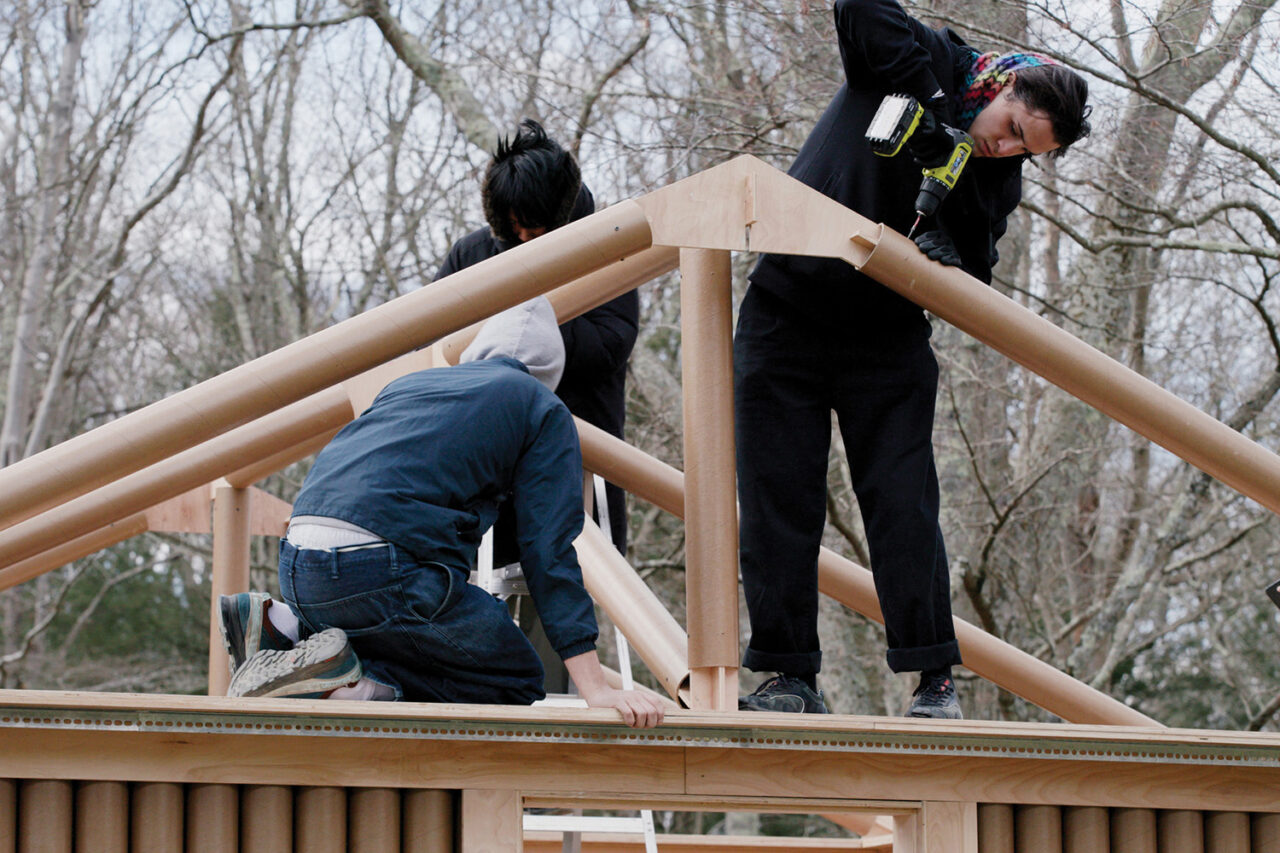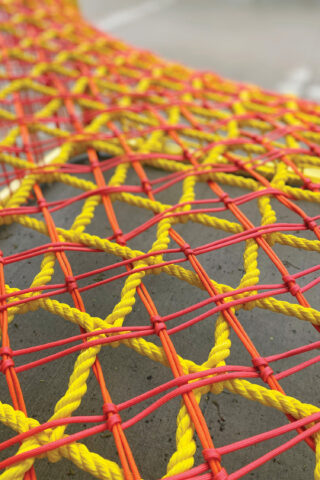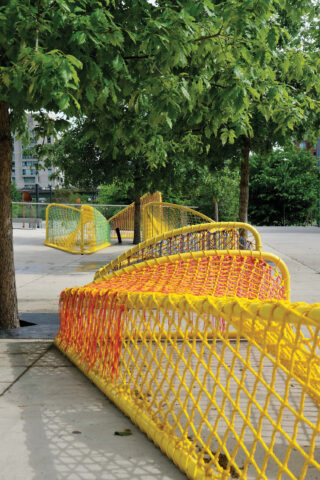

Shigeru Ban’s first visit to Philip Johnson’s Glass House was a stroke of serendipity. Ban was on an excursion with Dean Maltz, a managing partner of Shigeru Ban Architects (SBA), when Maltz pointed out that The Glass House was nearby. Ban, who had never been to the historic site in New Canaan, CT, was enthusiastic to visit. During their tour of the 49-acre landscape and its 14 structures, the pair met with Kirsten Reoch, who became Executive Director at The Glass House in 2023. Maltz remembers, “I said to Kirsten, ‘Wouldn’t it be nice to have a Paper Log House with The Glass House and The Brick House?’”
Reoch agreed that having a piece of Ban’s architecture in residence for the property’s 75th anniversary would only be fitting. The Japanese architect, who won the Pritzker Prize in 2014, has been designing paper tube structures to support disaster relief efforts around the world since 1994 (though his experiments with the material began in 1985). Ban sees paper tubes as an ideal structural material due to their wide availability, economy, and ease of assembly.
Now, his Paper Log House sits just downhill from The Glass House, nodding to some of Johnson’s own architectural experiments dotting the landscape. The 13.5-foot-square shelter is constructed on a platform of 39 plastic milk crates, with a structure of 156 paper tubes, plywood, and a canvas-like roof membrane. A unique shutter design allows the view to be opened up or obscured, depending on preference and weather.
(To site the house, the architects were able to reuse a compacted gravel pad that had been put in place by stone carver Mark Mennin for the property’s 2023 exhibition.) While Paper Log Houses used in disaster-hit areas are constructed by locals or volunteers on the ground, Ban and Maltz recruited students from their alma mater, The Cooper Union, to build this project. As part of the university’s building technology course, students began fabricating Paper Log House components at their Manhattan campus in February 2024. After a five-week preconstruction period, the components were trucked to New Canaan and assembled by 17 students, faculty members, and SBA staff in 15 hours over two bitterly cold days in March.




For Johnson, the bucolic property was meant for inspiration and experimentation—to show how informed architectural works can be applied to the wider world. “So I would think he would be very happy to have this on this property,” said Maltz during a springtime visit to the grounds. “In today’s world we have so much natural disaster, due to climate change, and a need to help others. This is the period of architecture we’re in, with young students embracing this work.” The project will be on display through December 15, 2024. An accompanying exhibition and time-lapse video documenting the students’ fabrication and assemblage of The Paper Log House is also on view in Johnson’s 1995 building on the property, Da Monsta.






















